
This article analyzes 1.3 million YouTube videos to better understand how YouTube search engines work.
specifically, we studied the correlation between factors such as views, comments and sharing and YouTube rankings. We will learn a lot about YouTube SEO.
Hidden
The following is a summary of the findings of this study:
1. Comments seem to be an influential ranking factor. We found that the number of comments on the video is closely related to the higher ranking.
2. Longer videos are significantly better than shorter videos. The average length of the home page of a YouTube video is 14 minutes and 50 seconds.
3. We found that there was a significant correlation between video views and rankings.
4. The number of shares generated by videos is closely related to YouTube’s home page ranking.
5. There is a moderate correlation between the number of subscribers and the ranking of the channel. This means that even small channels have the opportunity to rank their videos on YouTube.
6. Video likes are significantly associated with higher rankings.
7. There is a strong correlation between subscription-driven and rankings. Therefore, videos that bring in new subscribers have an advantage in YouTube search.
8. We found that the relationship between keyword-rich video tags and rankings is very small. This may mean that YouTube can now understand video content without the help of metadata.
9. Videos with exact matching keywords in the video title seem to have a slight advantage over videos that do not. This means that including keywords in the title may slightly improve your ranking.
10. We find that the correlation between keyword-optimized video description and ranking is zero.
11. HD video dominates YouTube’s search results. 68.2% of the videos on the home page of YouTube are in high definition.
I have detailed data and information about our survey results below.
There is a strong correlation between video comments and ranking.
YouTube encourages creators to post videos that maximize participation. Needless to say, comments are a powerful indicator of how people interact with your video.
but does YouTube use comments as a ranking signal?
our data show that they do this:

, as you can see in the chart above, the more comments the video has, the higher its ranking. Given YouTube’s emphasis on user engagement, this result is not surprising.
point: videos with a lot of comments tend to rank highest on YouTube.
long videos over short videos
when it comes to video search engine optimization, should you create short videos? Or is it better for you to use a longer video that covers a topic?
, we analyzed our data to find out.
our data show that longer videos tend to be significantly better than short videos.
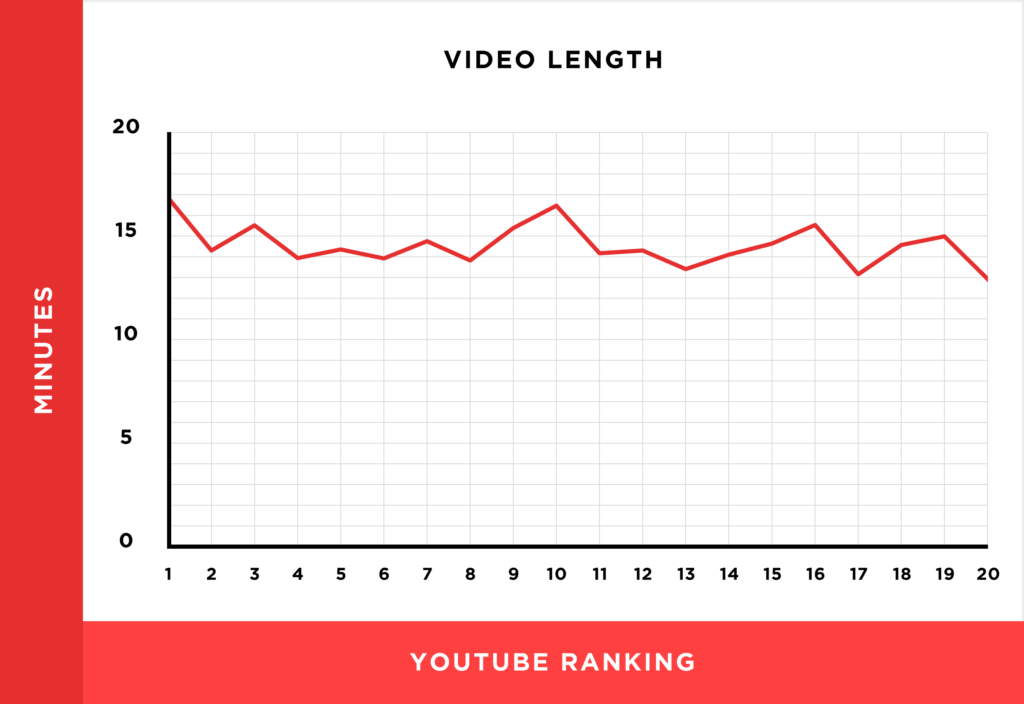
In fact, the average time for a video to rank on the first page of YouTube is 14 minutes and 50 seconds.
, what’s going on here?
YouTube has publicly confirmed that the total viewing time of the video is a key ranking signal.
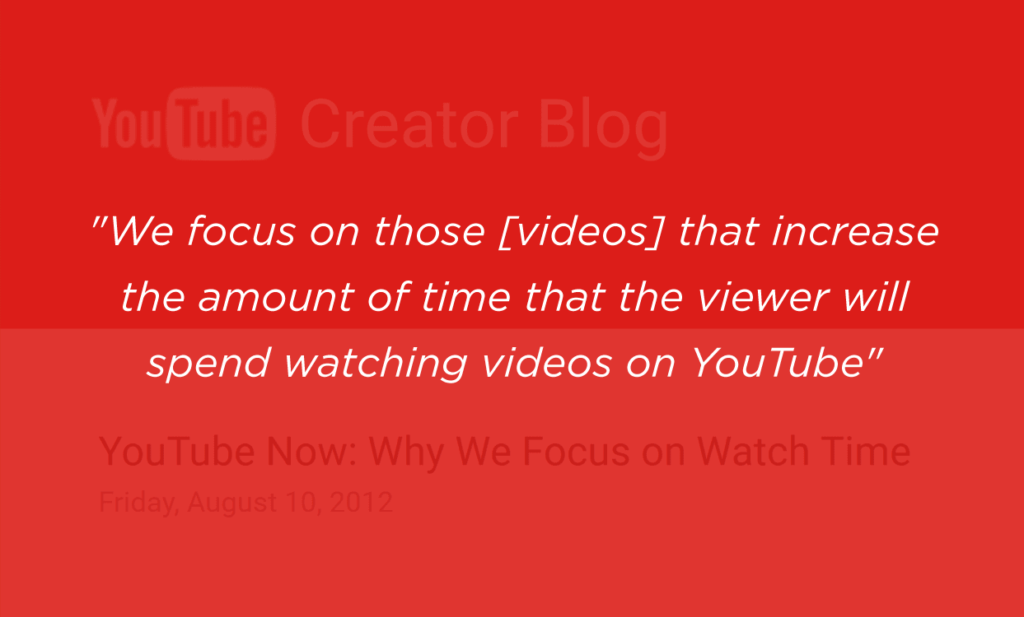
in addition, in 2015, Google obtained a patent for an algorithm that uses “viewing time” as a ranking signal.
in short, YouTube wants to promote videos that allow people to stay on YouTube for a long time. Longer videos can best achieve this, so you prefer longer video content. Another theory of
is that longer videos provide more overall value in a single video. This is true for “Operations Guide” videos and content designed for entertainment. The value provided by longer videos may encourage more interactive signals (including comments and likes) that ultimately affect the rankings.
in fact, if you roughly search for hot keywords, it is difficult to find short videos at the top of the search results (
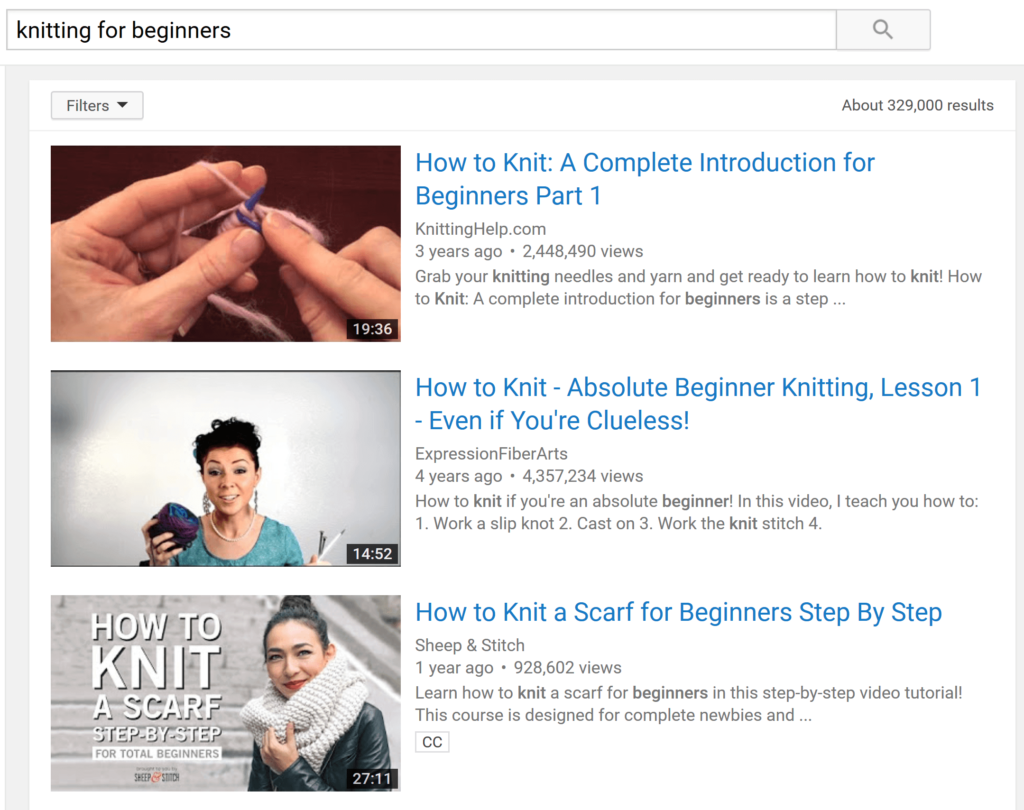
point: longer videos perform best in YouTube searches. The average video duration on the front page of YouTube search results is 14 minutes and 50 seconds.
Video sharing is closely related to higher rankings.
Google has long denied the fact that social signals play a role in their algorithms.
, however, YouTube’s algorithm runs independently of Google. As a result, YouTube is likely to use share from social media networks such as Facebook, Twitter and LinkedIn as a ranking factor.
in fact, we did find a strong correlation between stocks and the higher rankings in YouTube:
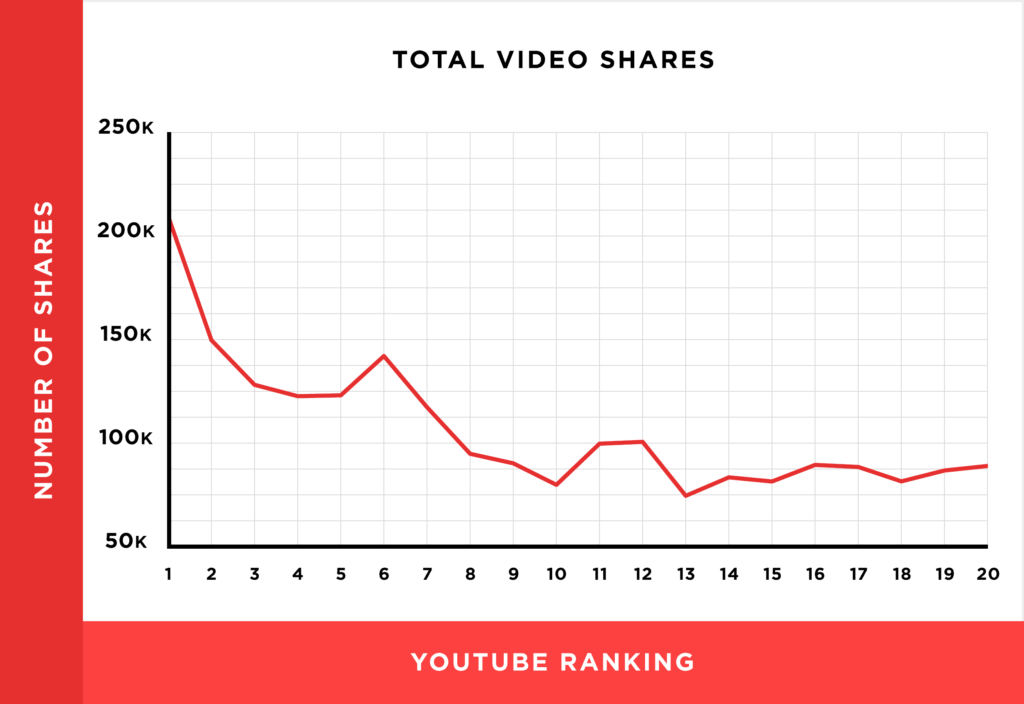
needs to note that we used YouTube’s publicly shared report for this analysis.
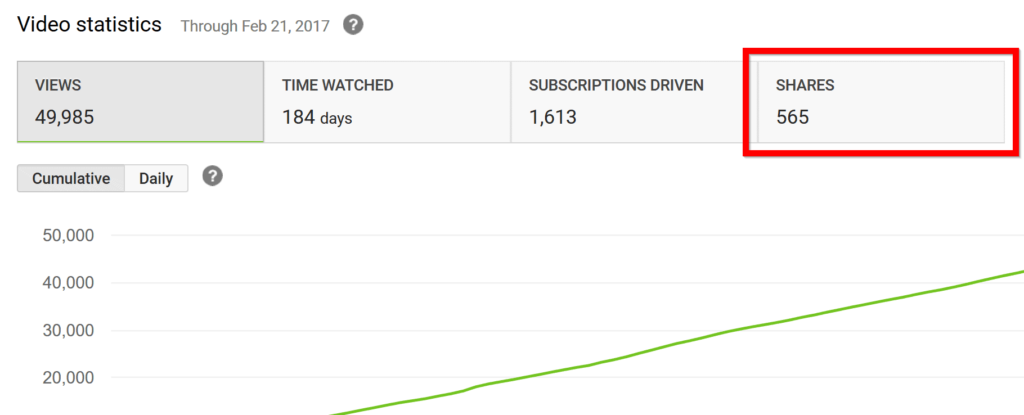
, why is this important? One of the main problems with
‘s use of social sharing as a ranking signal is that they are easy to play with. Anyone can give someone a few dollars in exchange for sharing content on Facebook 100 times. This is not the case on
YouTube. Unlike
, which uses social sharing icons on web pages to share content, YouTube knows which users share video content. And the location they share.

‘s tracking makes the signal more difficult to play with.
, along with YouTube, encourages publishers to create highly shareable content (YouTube reports sharing in YouTube analytics), and you probably think that the relationship between sharing and ranking is more than just accidental.
Main point: the video with high sharing rate is better than the video with lower sharing rate.
The number of viewing times of the video is significantly related to the ranking.
video views used to be the number one factor in YouTube’s ranking.
‘s idea at the time was: watch a lot = popular videos = high-quality videos.
, however, YouTube found that the number of views is usually a poor measure of video quality.
so they changed their algorithm to emphasize factors such as audience retention and participation:
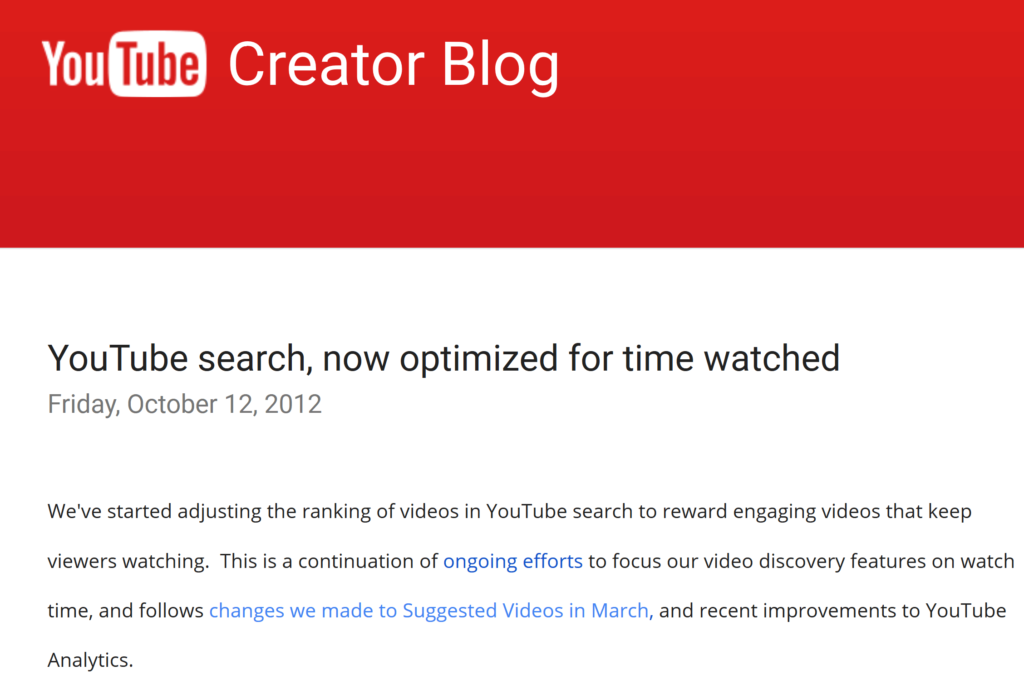
however we found that the total number of video views was still significantly correlated with rankings.

it seems that you still need a lot of views to rank in YouTube. (in fact, , a YouTube engineer, says that although the number of views is not as important as it used to be, YouTube still uses them.
this is because, without the number of views, your video will not be able to generate other signals (such as total viewing time and comments) that YouTube uses to evaluate your video quality.
, however, at some point, the returns of the view are diminishing.
this is why you often see high-quality videos rank higher than low-quality videos (even though low-quality videos are viewed much more times). Key points of
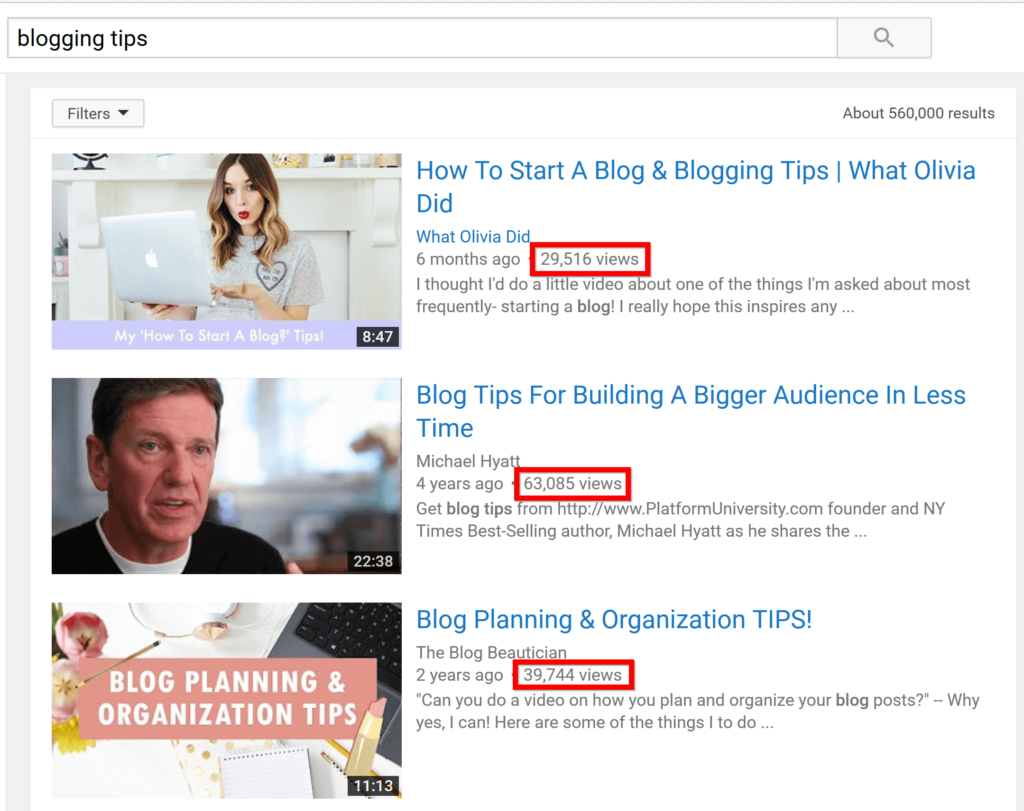
: the number of video views is significantly related to the higher YouTube ranking.
The number of subscribers on the channel is moderately related to the ranking.
We found a moderate correlation between the channel’s total subscribers and rankings:
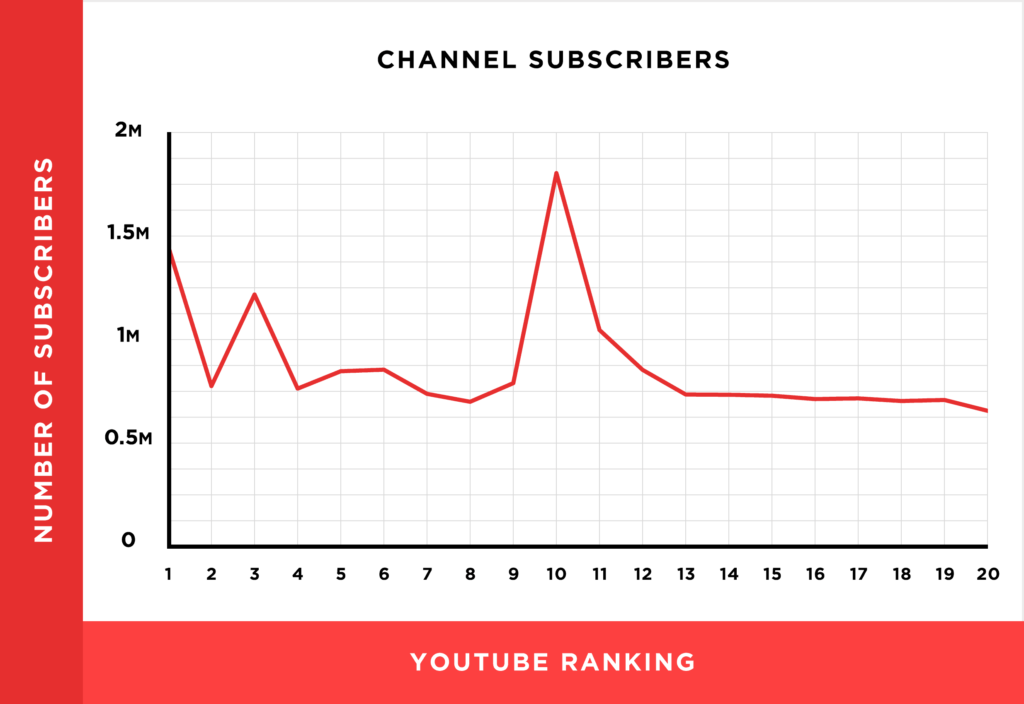
if you run a small or new channel, this is good news. Unlike Google, which seems to prefer big brands,
is more likely to rank content from “little guys”.
, for example, videos from two small channels rank higher than those from channels with more than 2 million subscribers for this popular keyword: results of this type of
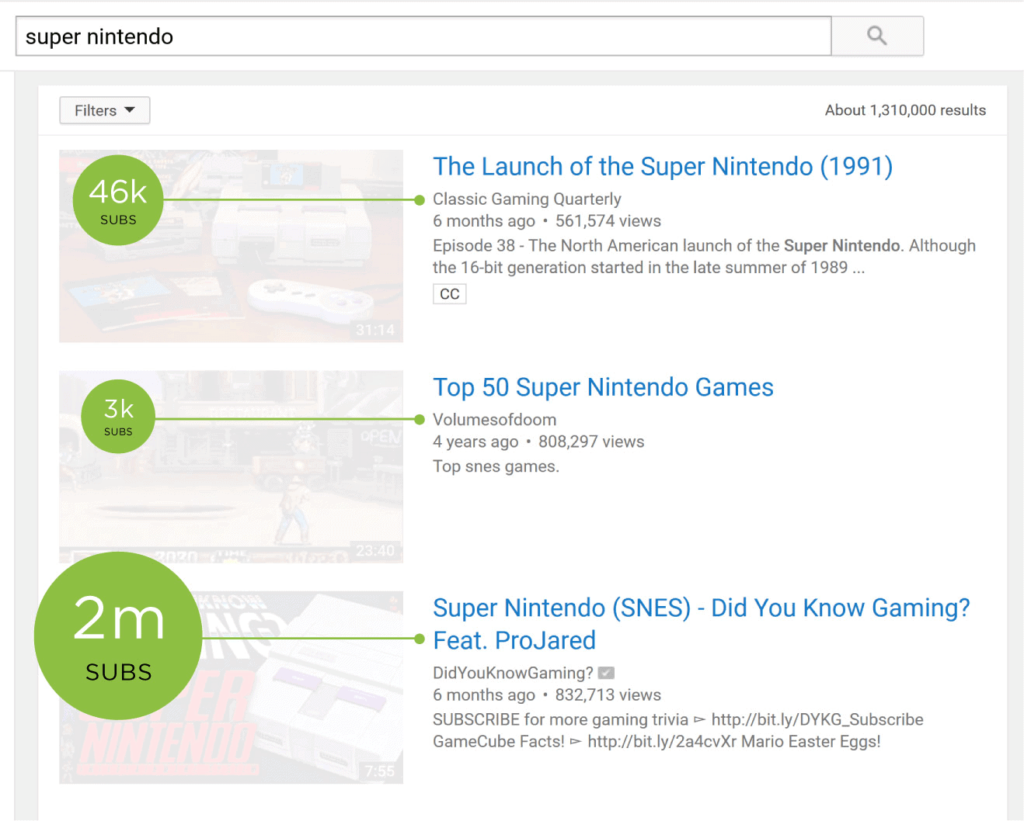
are not uncommon on YouTube.
(of course, channels with millions of subscribers have an advantage. But our data show that this advantage is not as significant as you might think.
point: channels with a large number of subscribers have an advantage in YouTube. However, videos from smaller channels are always better than videos from popular channels.
Videos with more likes are higher than videos with few likes.
It’s no secret that
YouTube prefers videos that attract viewers.
video “like” is a powerful signal of participation. After all, like is a crowdsourced way to assess how the YouTube community feels about your video.
, that’s the theory. But what do the data say?
our research reveals a significant correlation between likes and video rankings:

suggests that YouTube may use likes as a ranking signal.
but, as you know, correlation does not always mean causality.
has a lot of favorite videos that may also be of high quality. High-quality video produces other ranking signals that YouTube values (such as audience retention). Key points of
: YouTube may use liking as a direct ranking factor. Or it could be that beloved videos generate other signals that YouTube really cares about.
generates new channel subscribers with higher video rankings than non-subscribers.
if someone really likes videos on YouTube, what might they do? Subscribe to the channel so that they can watch future videos on the channel.
in other words, videos that encourage a large number of new subscribers must be a sign of quality.
is not only that, but getting new subscribers is an extremely difficult indicator for large-scale games.
of course, you can get some people (or robots) to subscribe to your channel after watching the video. But this is much more difficult than generating thousands of false opinions or likes.
knows this, and YouTube is likely to use “subscription-driven” as a ranking factor.
our data do show a significant correlation between subscription-driven and higher video rankings.
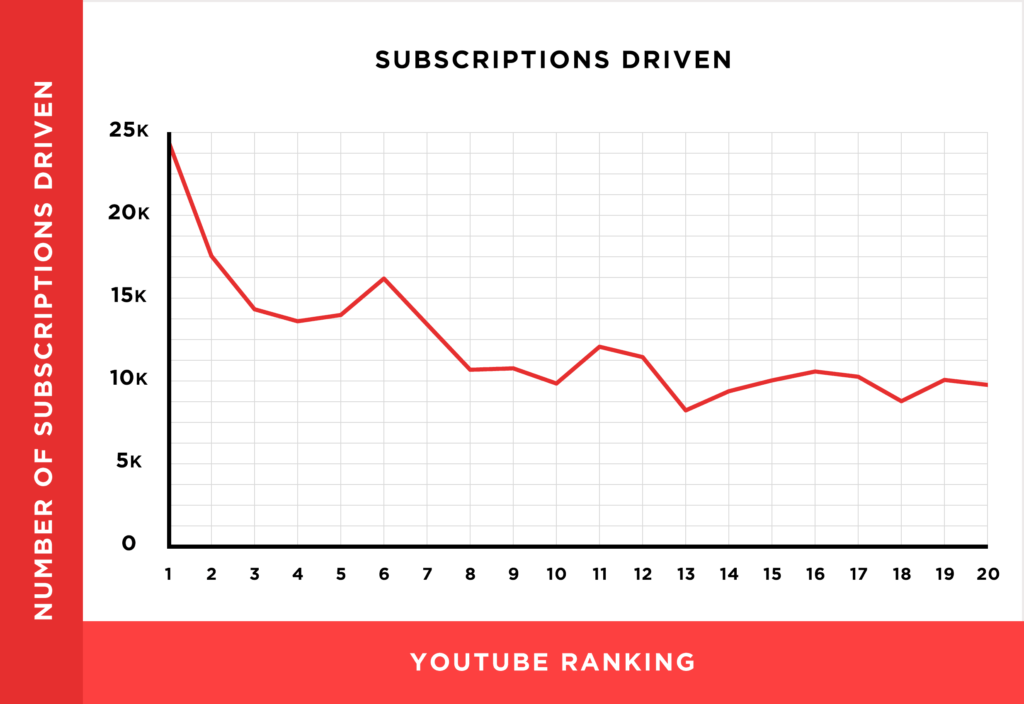
is like sharing, YouTube shows the number of subscriptions under each video:

(publishers can choose not to display this information publicly).
, like most metrics, you can increase the number of subscribers generated by video by creating world-class video content.
, however, you can also ask viewers to subscribe:

I find that a clear subscription call phrase significantly improves my “subscription driver” on each video.
key points: “subscription-driven” has a strong correlation with higher YouTube rankings.
Tags with rich keywords have a weak correlation with YouTube rankings.
in the early days of online video, platforms such as YouTube relied on metadata to understand your video theme.
for example, YouTube will analyze the title, description, tag of your video. Even your video file name. In essence, the more text you can attach to the video, the better.
Today, YouTube can “listen” to every word in your video (no need for you to upload transcribed content):

knows this, does YouTube still use video tag metadata?
We found a weak correlation between keyword-rich video tags and rankings:

tags no longer seem to be as important as they used to be, but our data show that they still have a small impact. So it makes sense to use them.
(in addition, YouTube recommends that you use descriptive tags. This indicates that they still use tags to understand the content and context of your video.
key point: using your target keyword as a tag may help rank. But the overall impact of the label seems to be small. The title optimized by the
keyword is slightly related to ranking.
Traditionally, the title of a video is metadata that YouTube attaches great importance to.
, however, we found that including exact keywords in your video title will only have a slight potential impact on the ranking:
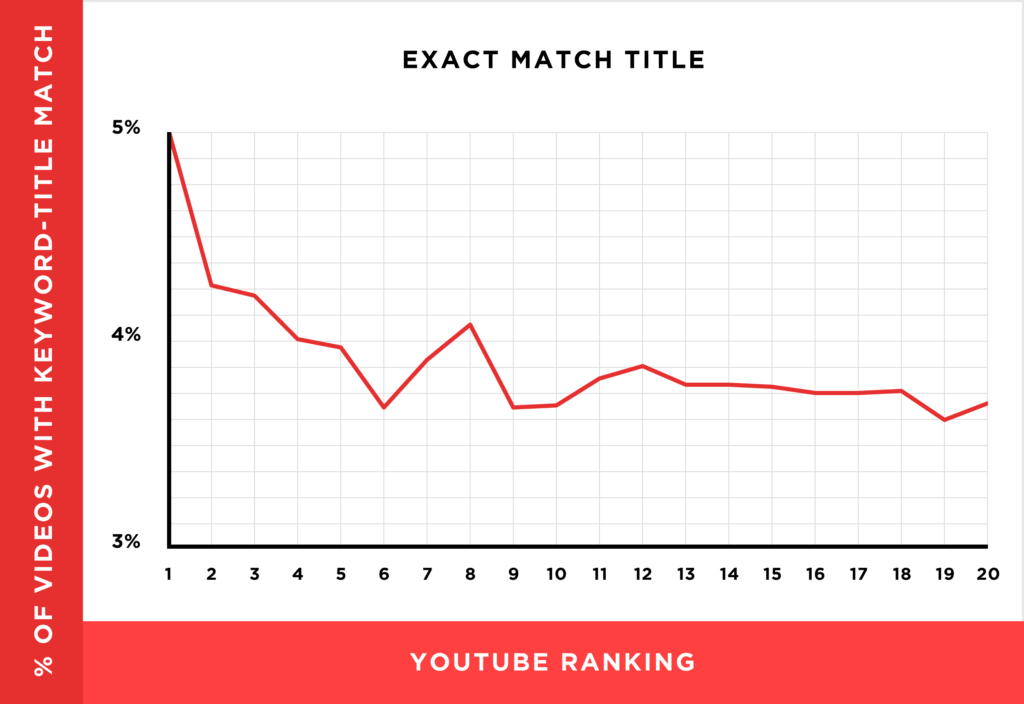
these findings may mean several things:
may be that YouTube no longer emphasizes the importance of the video title. However, this seems unlikely, as YouTube once said: “the title contains valuable information that can help viewers find your video in search results.”
is more likely that YouTube has a deeper understanding of the meaning of the title (beyond simple keyword matching).
, in other words, they may use a less complex version of Google semantic search. If so, YouTube does not need to see specific keywords in your title to rank you for the query. Synonyms can finish the job.
in fact, it is common to see videos with top keywords on YouTube. Even if they don’t contain exact terms in their titles.
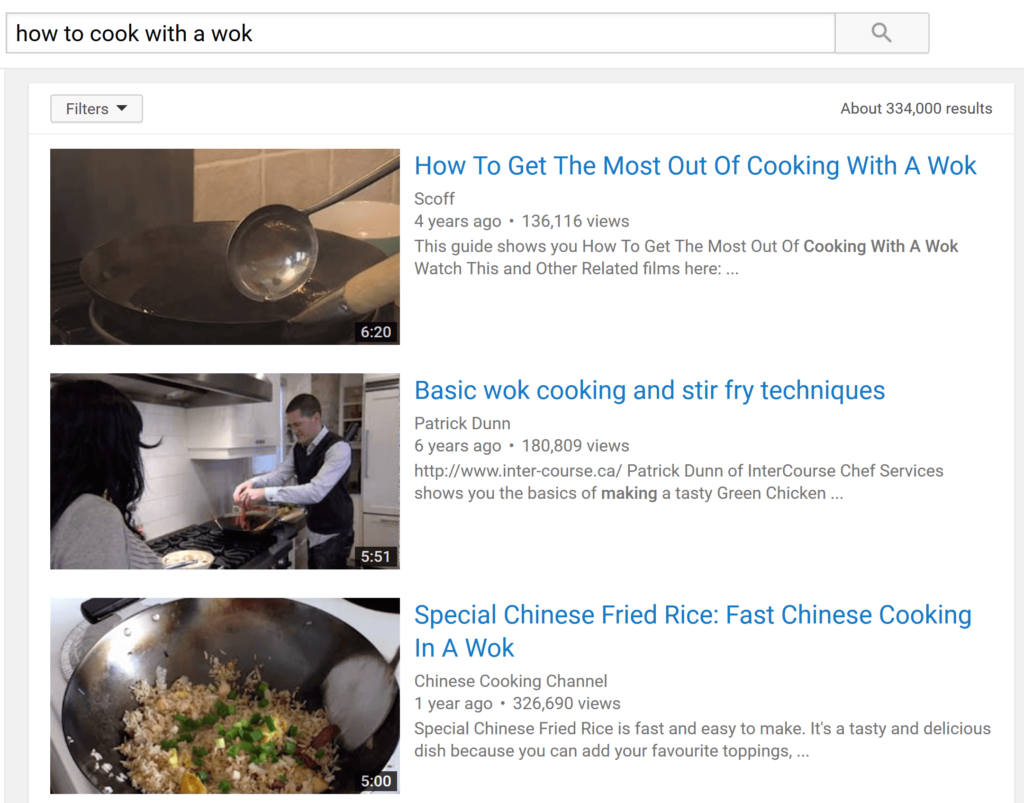
key points: using the target keyword in the title may help you rank the word. However, the relationship between keyword-rich video titles and rankings is very weak.
There is no correlation between keyword optimization description and the ranking of the term
Does
include keywords in the video description to help you rank the word?
according to our data, keyword optimization descriptions have no effect on rankings:
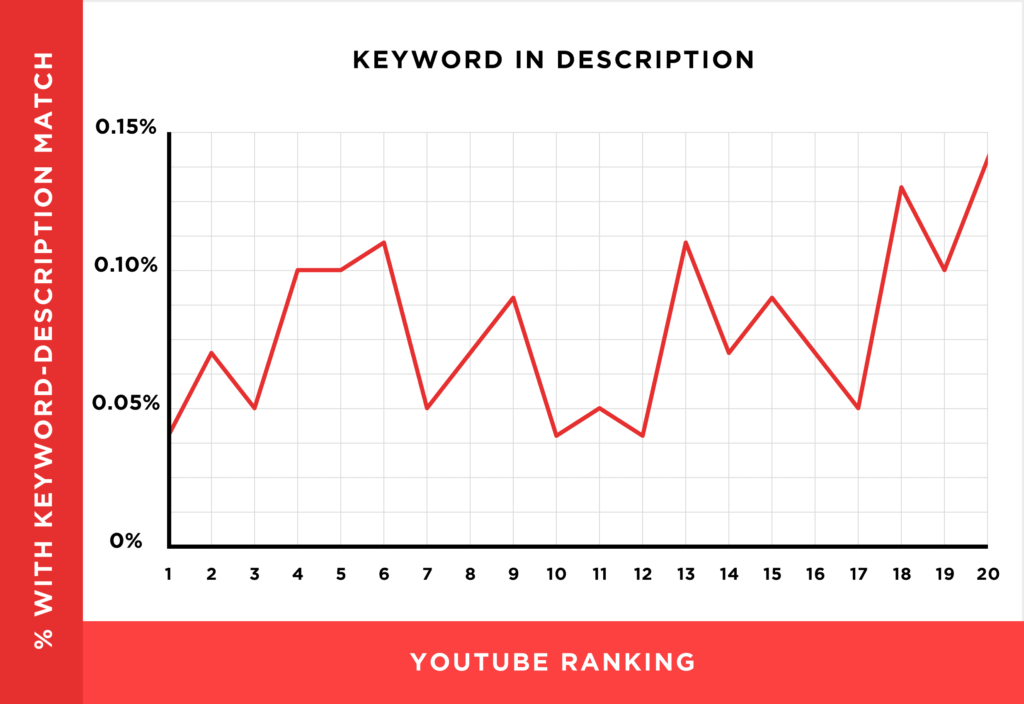
‘s findings contradict common “best practices” for video optimization: keyword-rich descriptions.
There are several possible explanations for this finding:
first of all, like the title, YouTube may not require you to use exact keywords in the description to understand your video content. For example, suppose your goal keyword is “how to grow tomatoes.” The use of terms such as “grow tomatoes” and “the best way to grow tomatoes” in your description may also be valid.
second, YouTube may use “keywords appear in the video description” as the ranking signal, but it is too small for us to measure. In fact, we found several videos with no description at all ranked high on the home page. This means that your video description is not as important as user-generated signals, including the number of views and “subscription-driven”.
third, it may be that YouTube now ignores the video description as a ranking factor. This is unlikely, as YouTube points out: “writing good descriptions with the right keywords can increase viewing times and time, because they help your videos appear in search results.” .
despite this discovery, I still recommend writing keyword-rich descriptions.
, why? The
-optimized description can help you display in the recommended video sidebar, which is an important source of viewing for most channels.
key points: there is no correlation between the keyword optimization description and the ranking of the term. However, I still recommend writing keyword-rich descriptions, as they can help your video rank in related terms (and appear as “recommended video”).
HD video occupies the first page of YouTube search results
HD video or standard definition video performs best in YouTube search?
We found that on the home page of YouTube, HD video appears significantly more frequently than SD video:
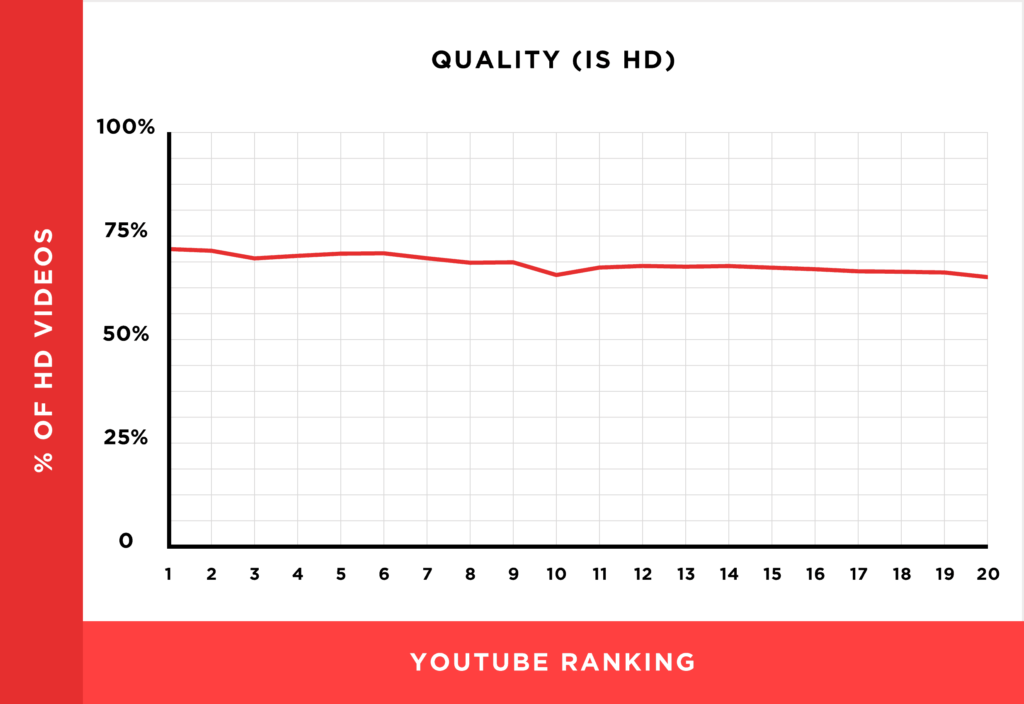
this data can be interpreted in two ways:
first, probably the YouTube users who produce the best video content also tend to record in HD format. So this is an example of relevance that tells only part of the story.
second, YouTube may have a natural preference for HD video content. It is difficult for
to determine the full impact of HD and SD only from our relevant data.
anyway, the vast majority of videos at the top of YouTube are high-definition videos. In fact, 68.2% of the videos on the home page of YouTube are in high definition.
point: high-definition videos are more common than standard definition videos on the home page of YouTube search results.
Summary
Although
YouTube is a Google product, its search ranking rules are not the same as those considered by Google search rankings. after all, search engines are more concerned with page content (including text, links, pictures, etc.), while videos are more concerned with user interaction dimensions such as video stay time, likes, subscriptions, comments and so on.
on YouTube video SEO optimization, you can also check out our previously released “tubing video keyword research guide”.

